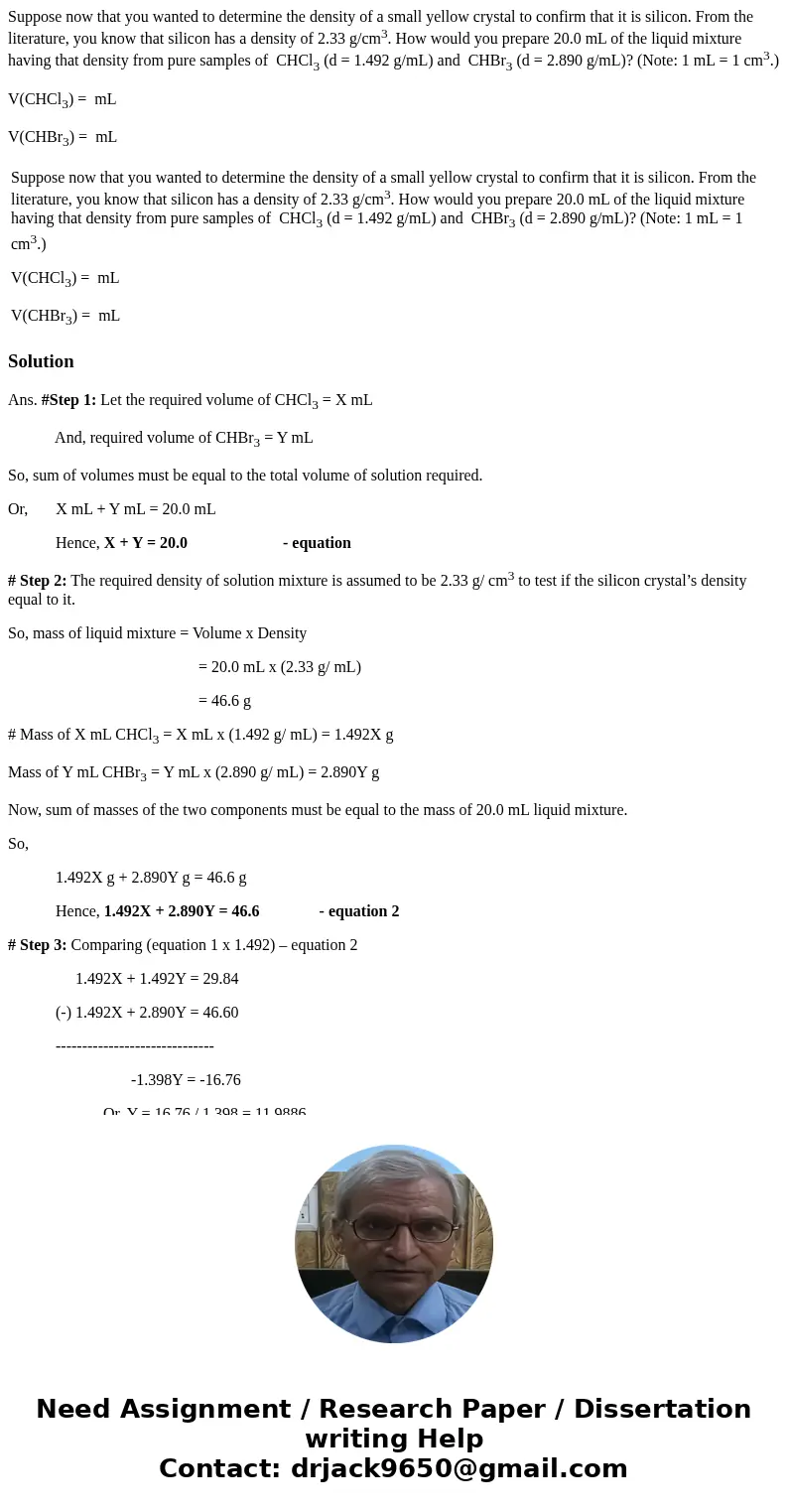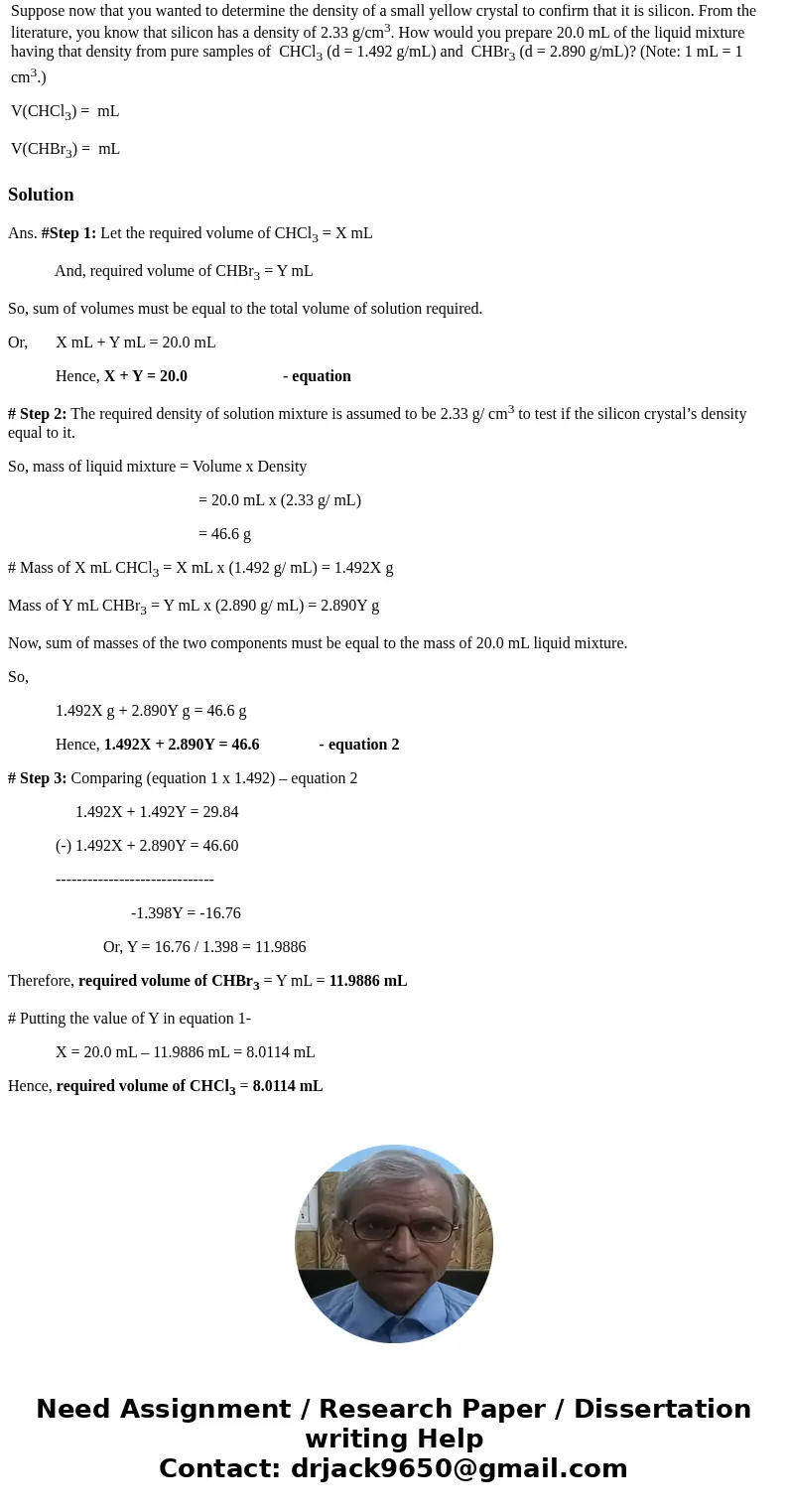Suppose now that you wanted to determine the density of a sm
Suppose now that you wanted to determine the density of a small yellow crystal to confirm that it is silicon. From the literature, you know that silicon has a density of 2.33 g/cm3. How would you prepare 20.0 mL of the liquid mixture having that density from pure samples of CHCl3 (d = 1.492 g/mL) and CHBr3 (d = 2.890 g/mL)? (Note: 1 mL = 1 cm3.)
V(CHCl3) = mL
V(CHBr3) = mL
| Suppose now that you wanted to determine the density of a small yellow crystal to confirm that it is silicon. From the literature, you know that silicon has a density of 2.33 g/cm3. How would you prepare 20.0 mL of the liquid mixture having that density from pure samples of CHCl3 (d = 1.492 g/mL) and CHBr3 (d = 2.890 g/mL)? (Note: 1 mL = 1 cm3.) V(CHCl3) = mL V(CHBr3) = mL |
Solution
Ans. #Step 1: Let the required volume of CHCl3 = X mL
And, required volume of CHBr3 = Y mL
So, sum of volumes must be equal to the total volume of solution required.
Or, X mL + Y mL = 20.0 mL
Hence, X + Y = 20.0 - equation
# Step 2: The required density of solution mixture is assumed to be 2.33 g/ cm3 to test if the silicon crystal’s density equal to it.
So, mass of liquid mixture = Volume x Density
= 20.0 mL x (2.33 g/ mL)
= 46.6 g
# Mass of X mL CHCl3 = X mL x (1.492 g/ mL) = 1.492X g
Mass of Y mL CHBr3 = Y mL x (2.890 g/ mL) = 2.890Y g
Now, sum of masses of the two components must be equal to the mass of 20.0 mL liquid mixture.
So,
1.492X g + 2.890Y g = 46.6 g
Hence, 1.492X + 2.890Y = 46.6 - equation 2
# Step 3: Comparing (equation 1 x 1.492) – equation 2
1.492X + 1.492Y = 29.84
(-) 1.492X + 2.890Y = 46.60
------------------------------
-1.398Y = -16.76
Or, Y = 16.76 / 1.398 = 11.9886
Therefore, required volume of CHBr3 = Y mL = 11.9886 mL
# Putting the value of Y in equation 1-
X = 20.0 mL – 11.9886 mL = 8.0114 mL
Hence, required volume of CHCl3 = 8.0114 mL


 Homework Sourse
Homework Sourse